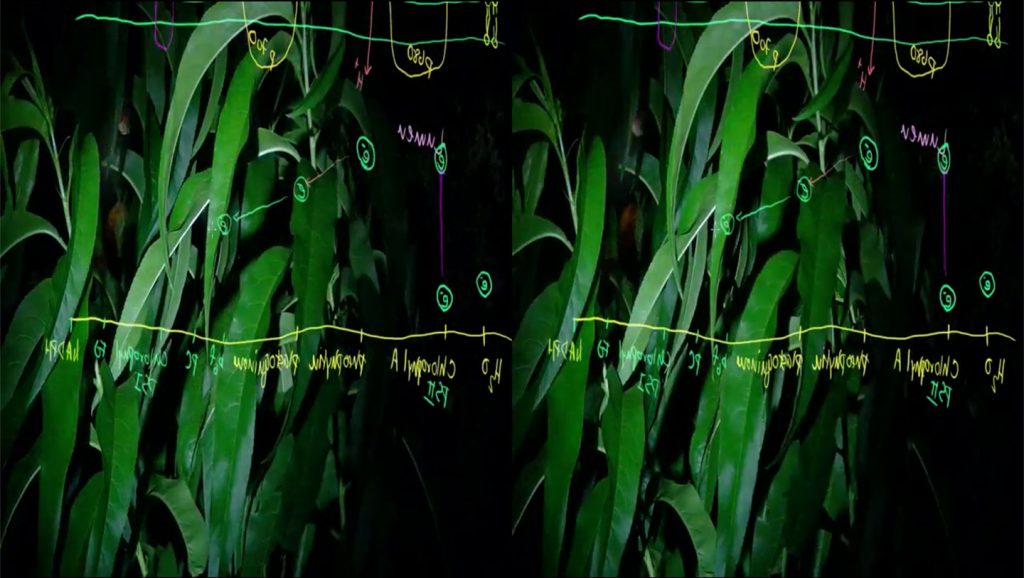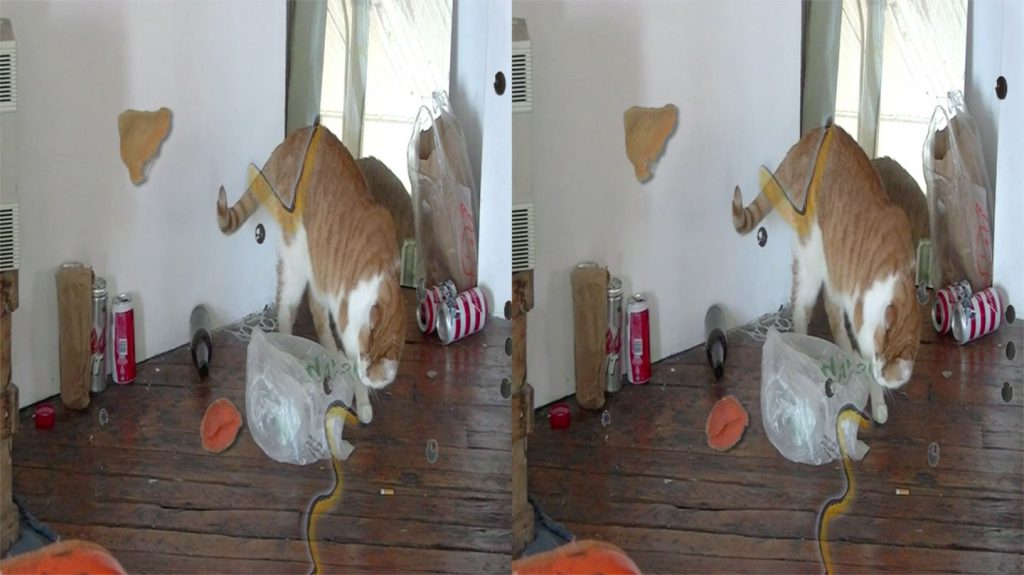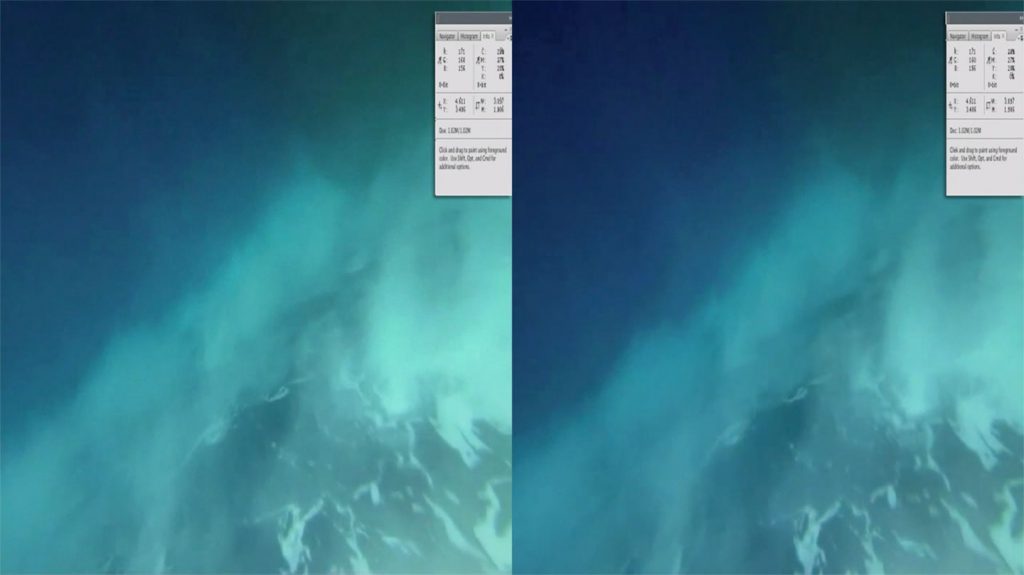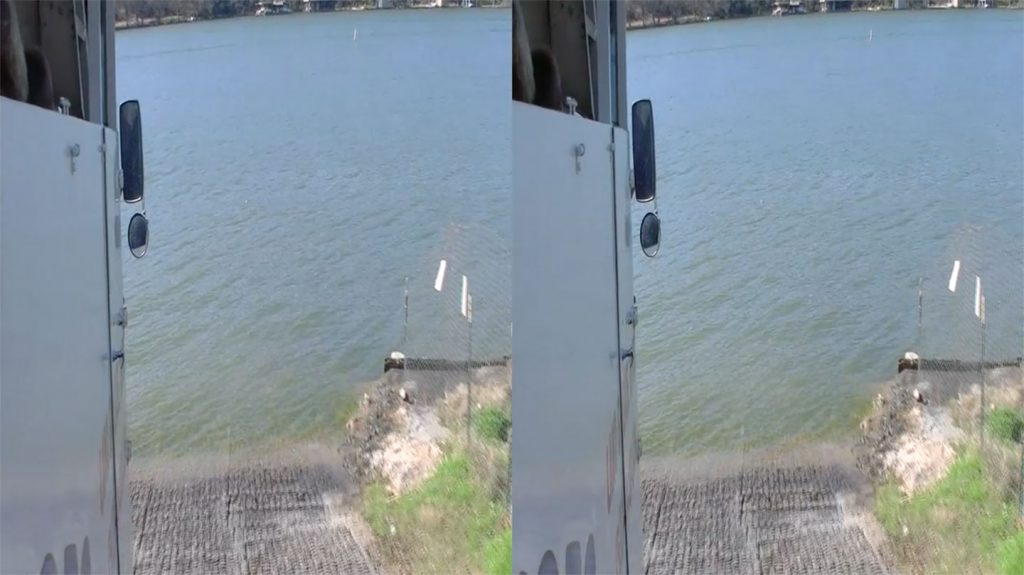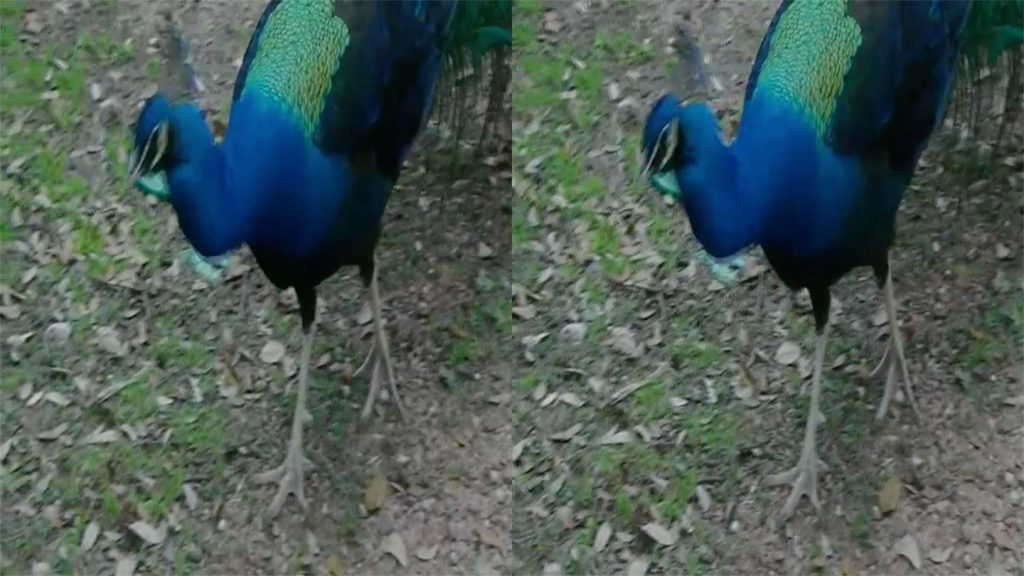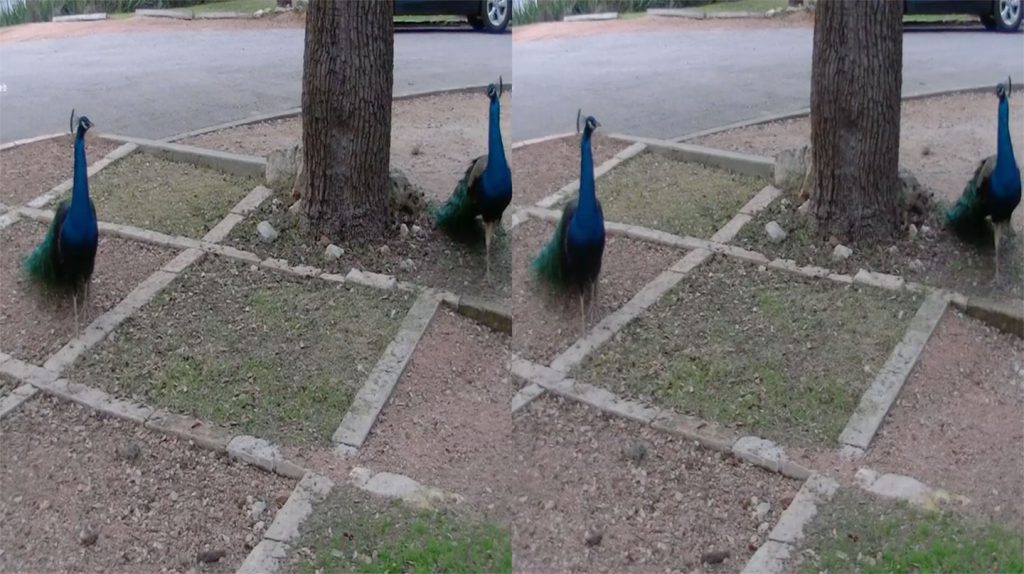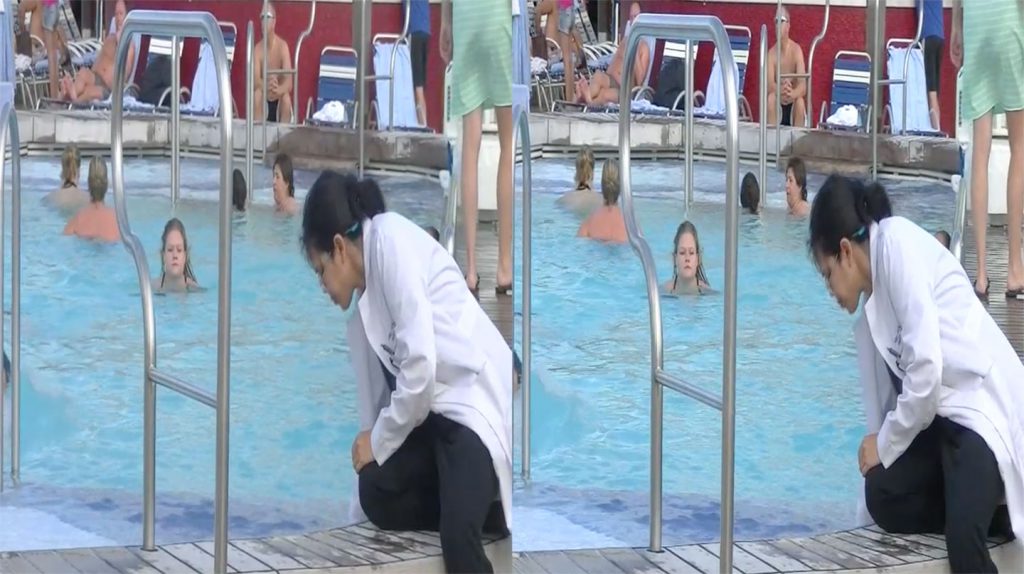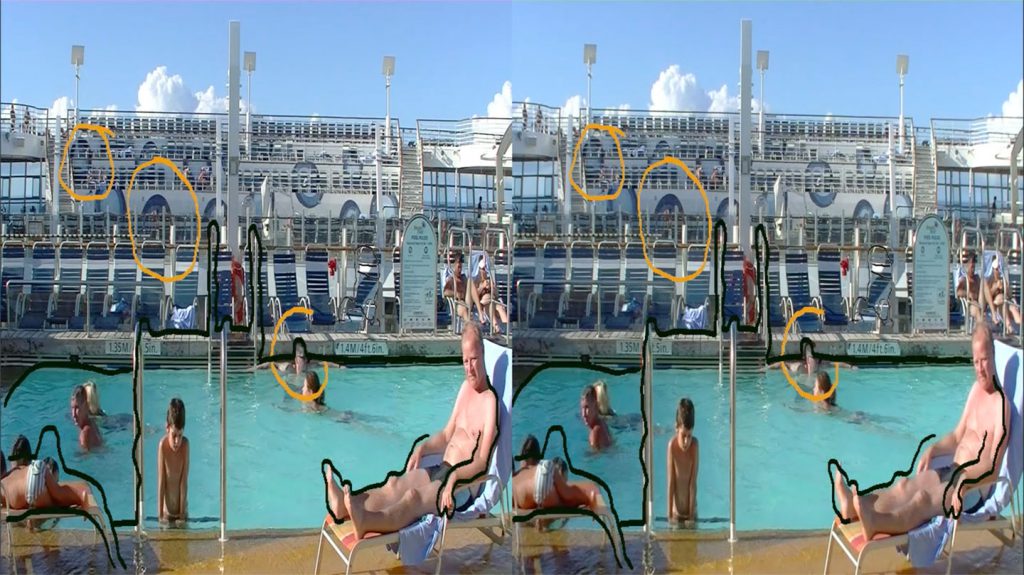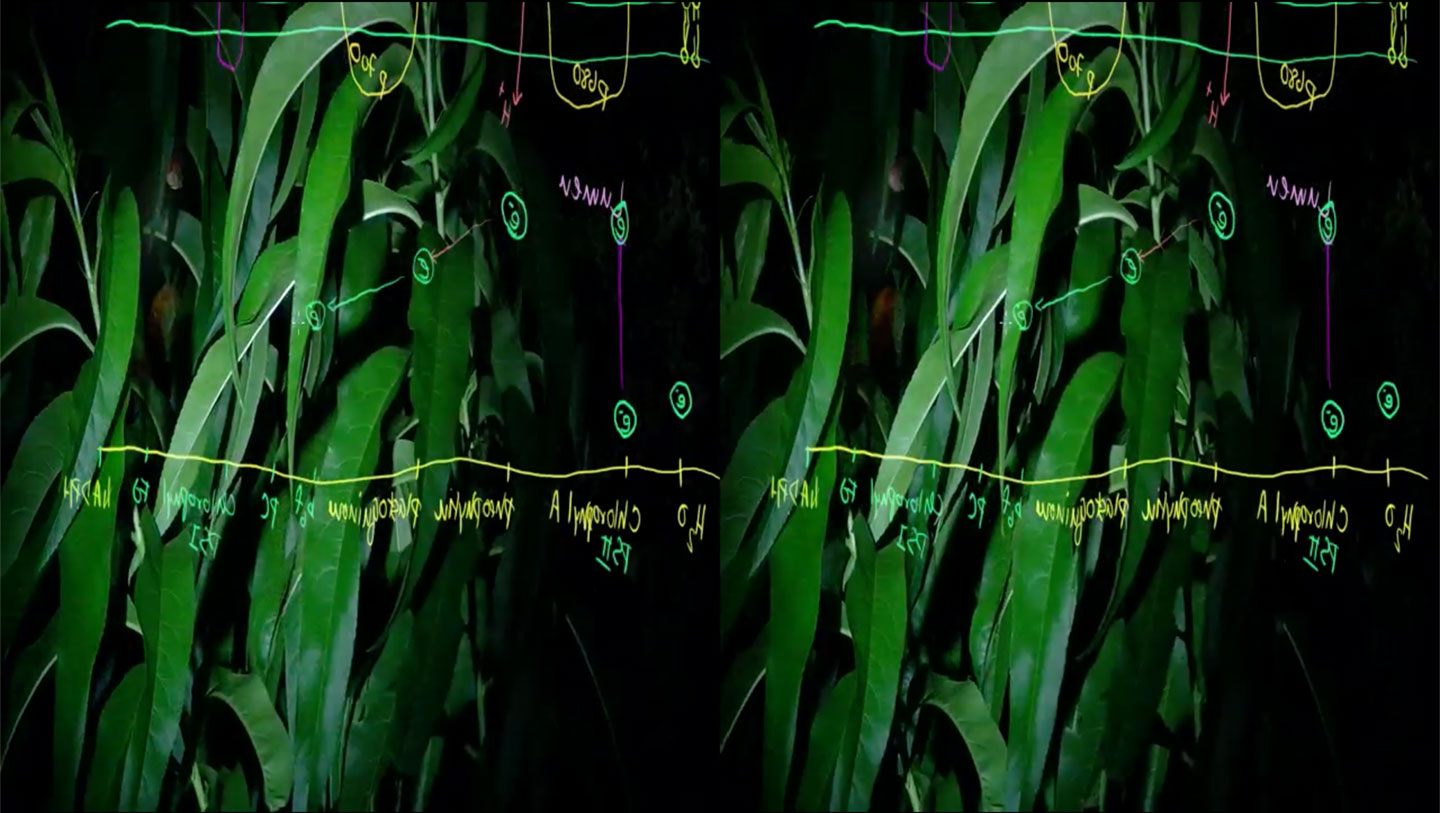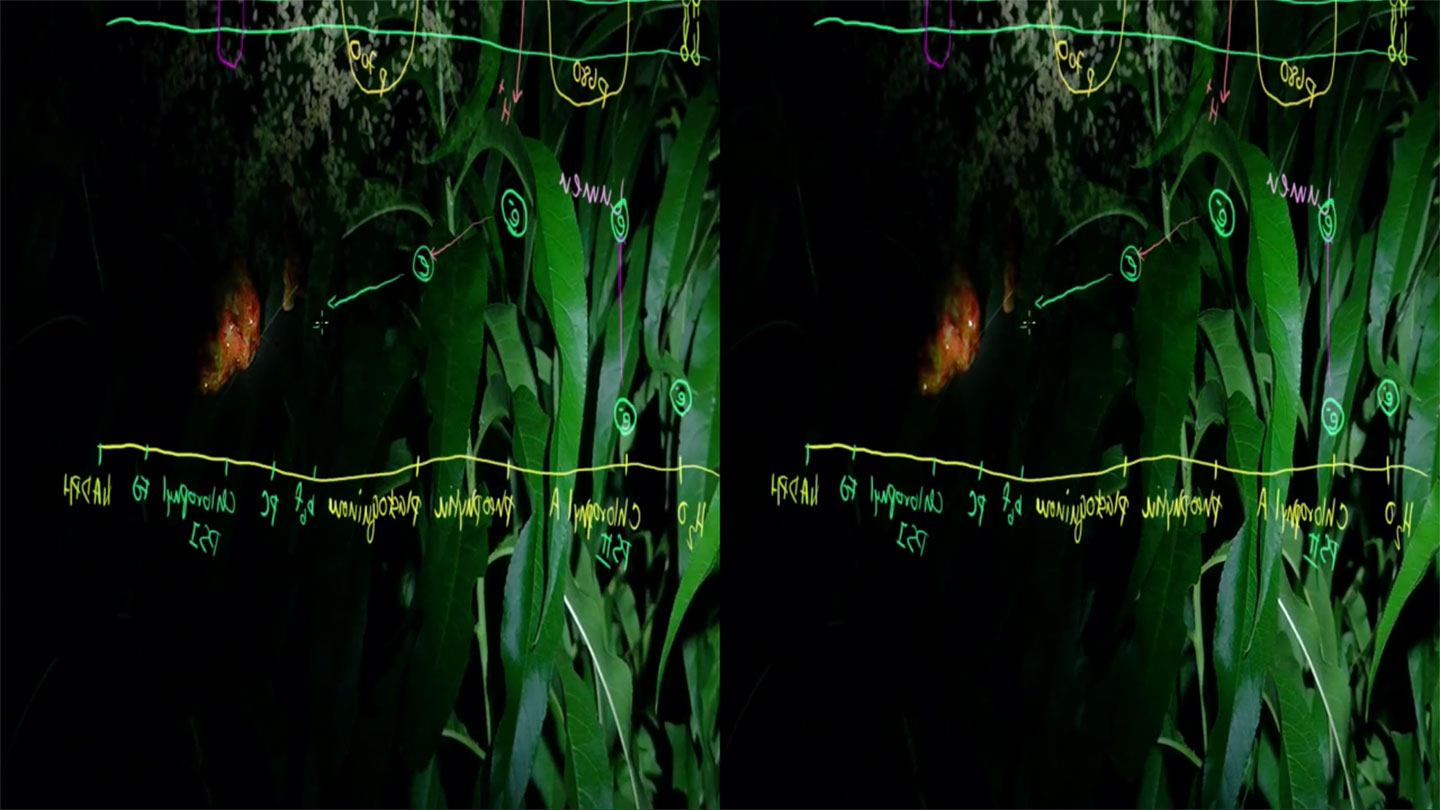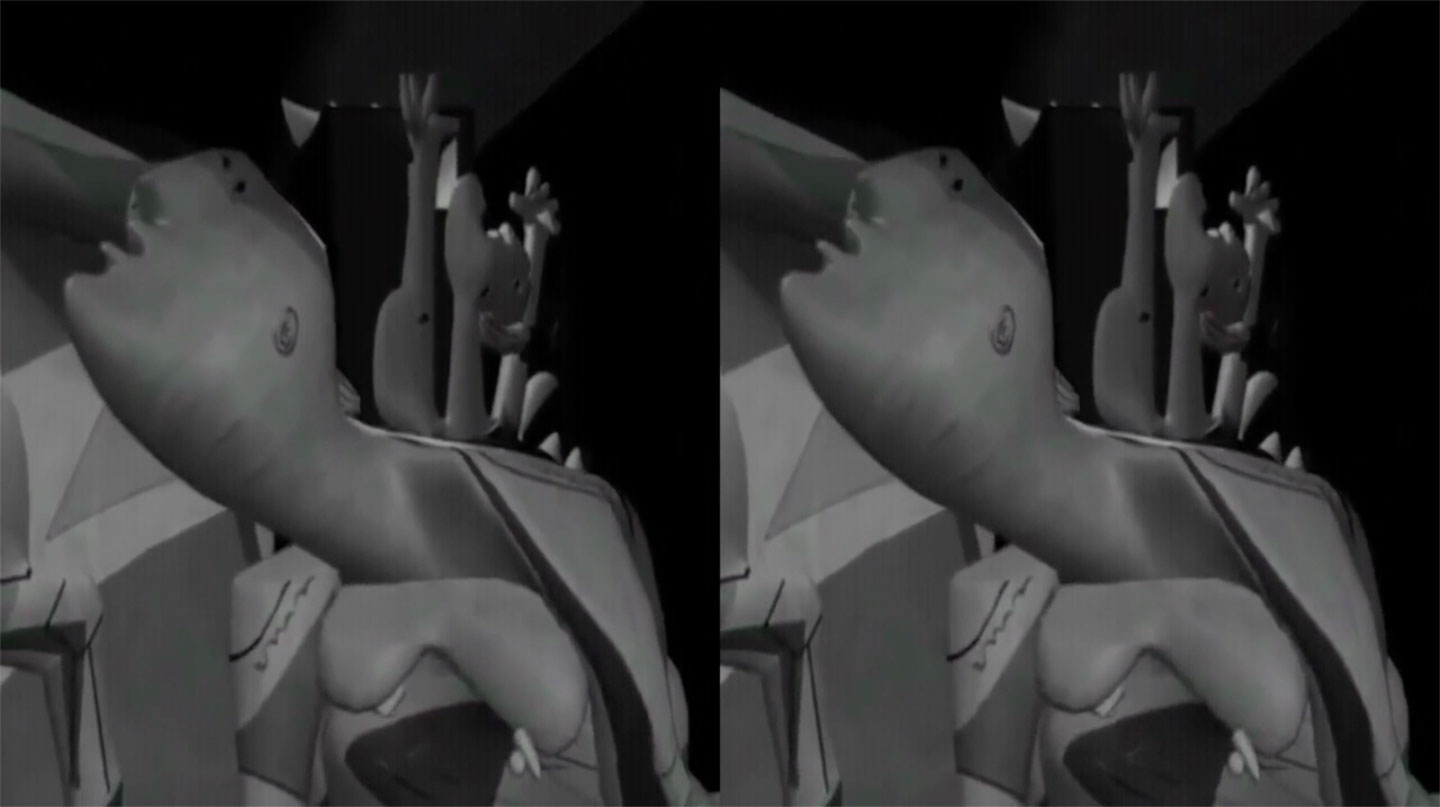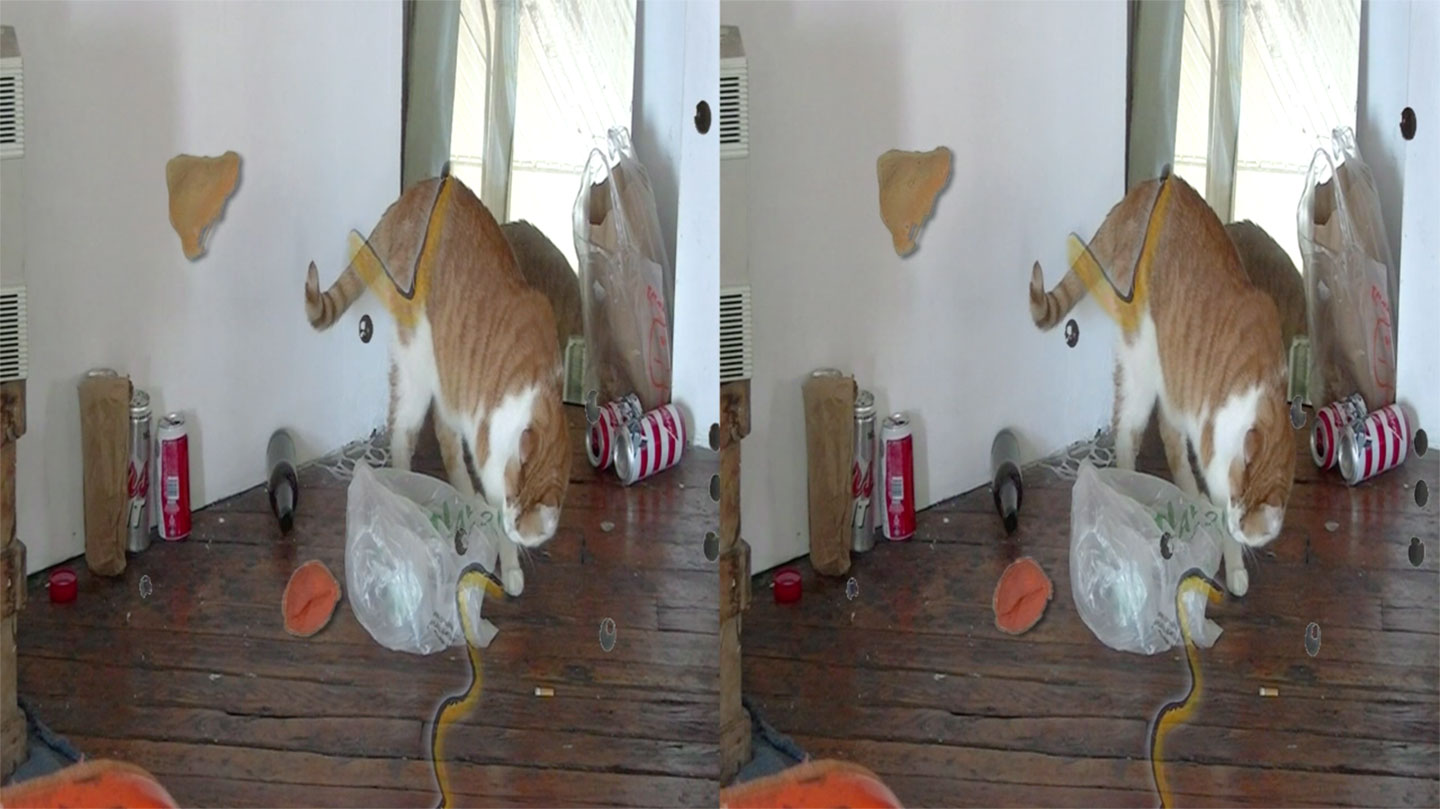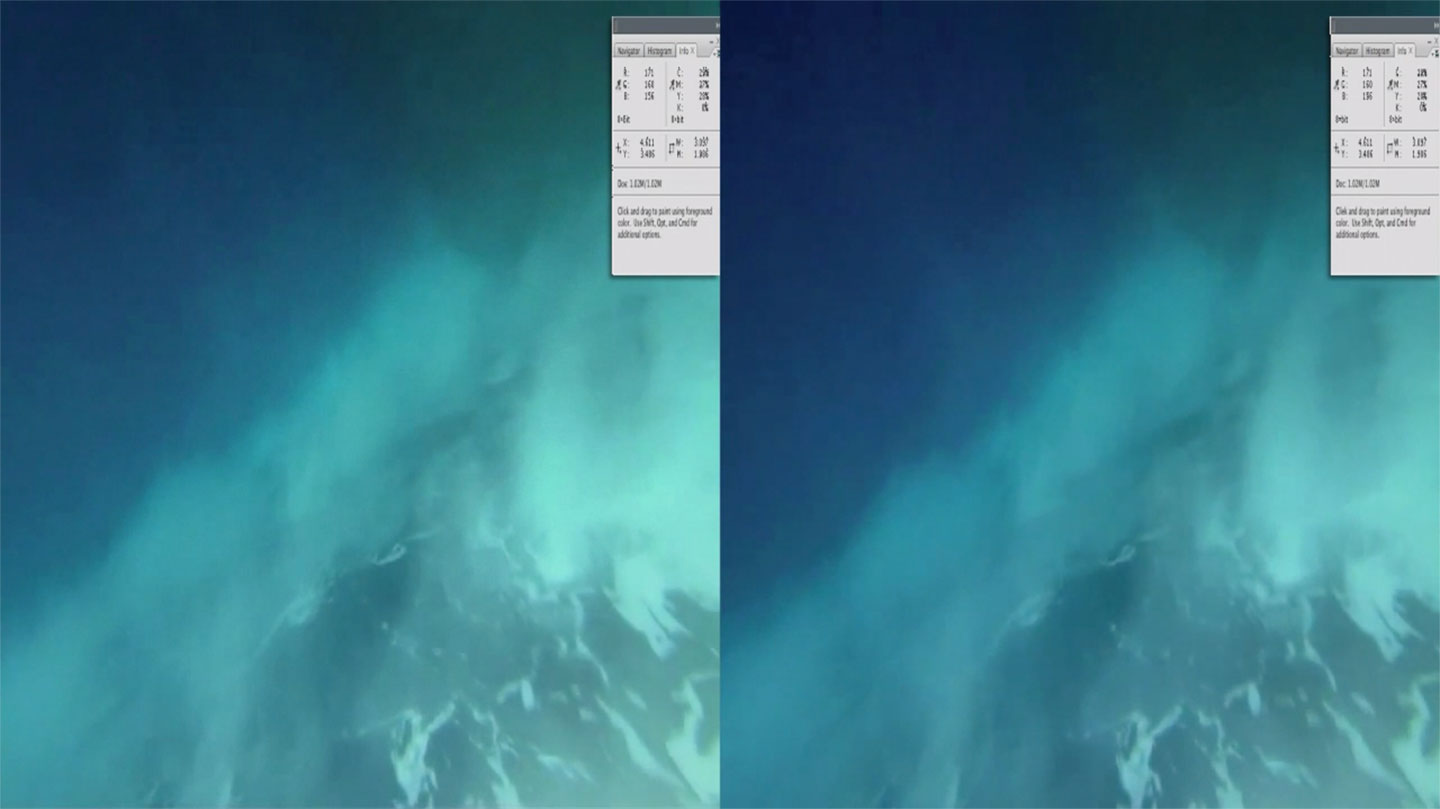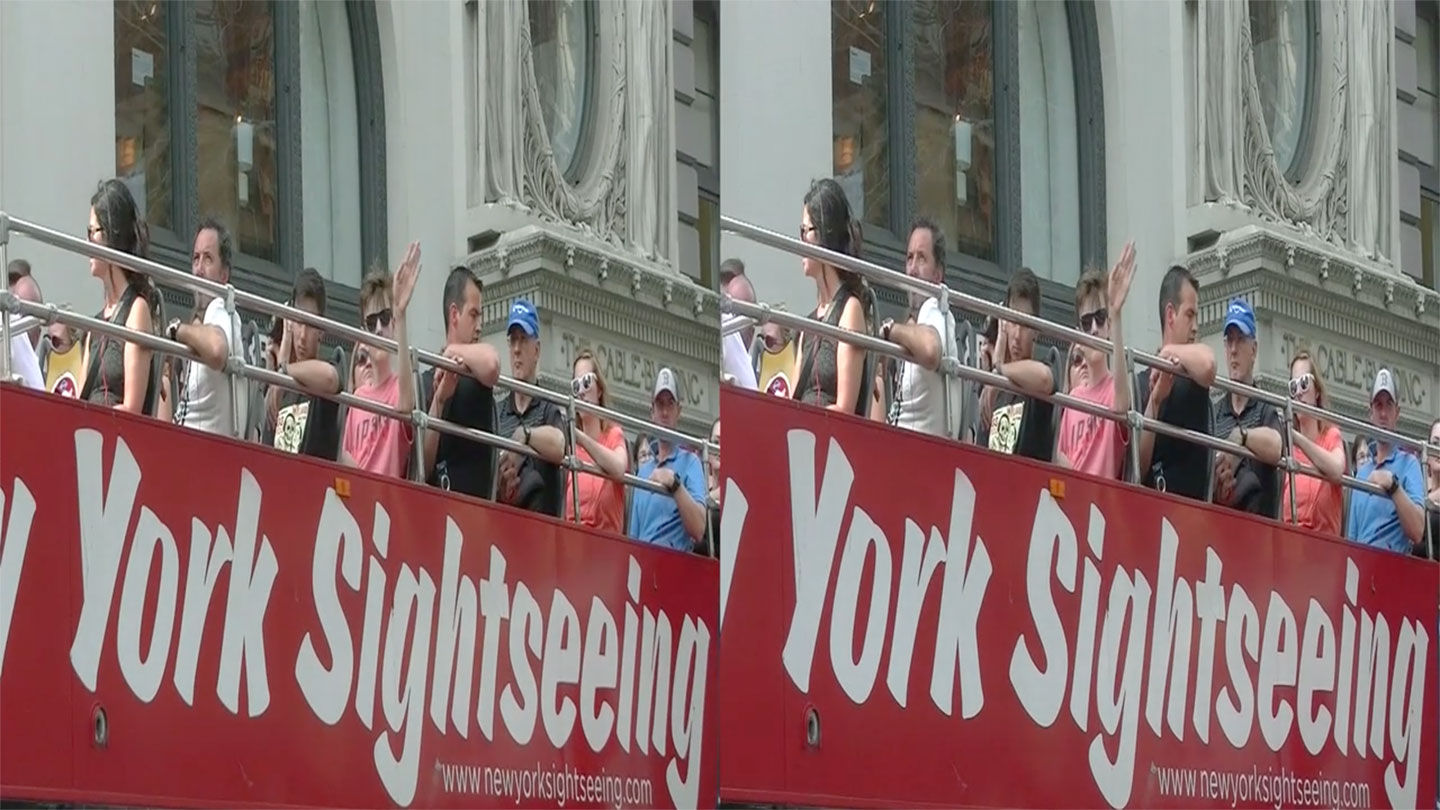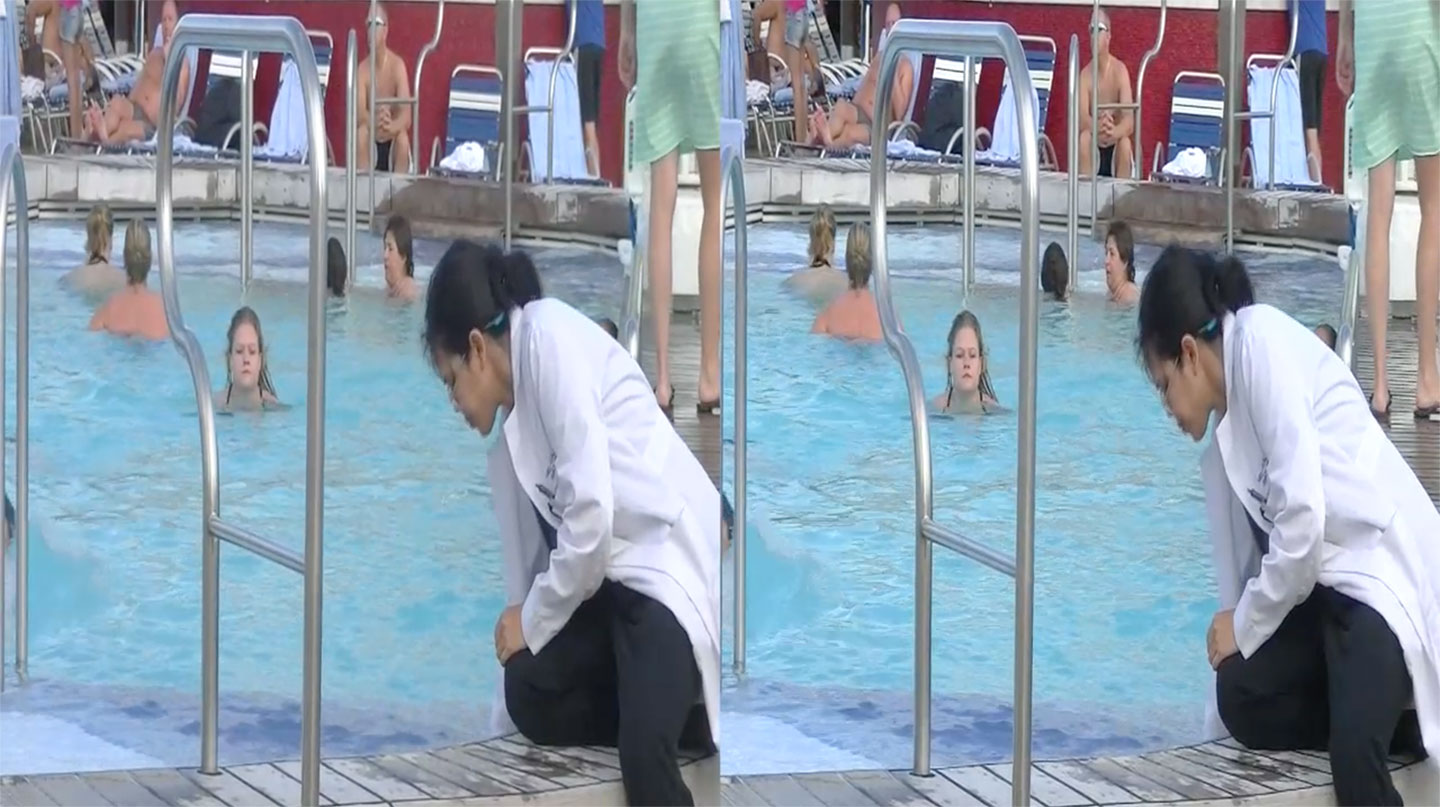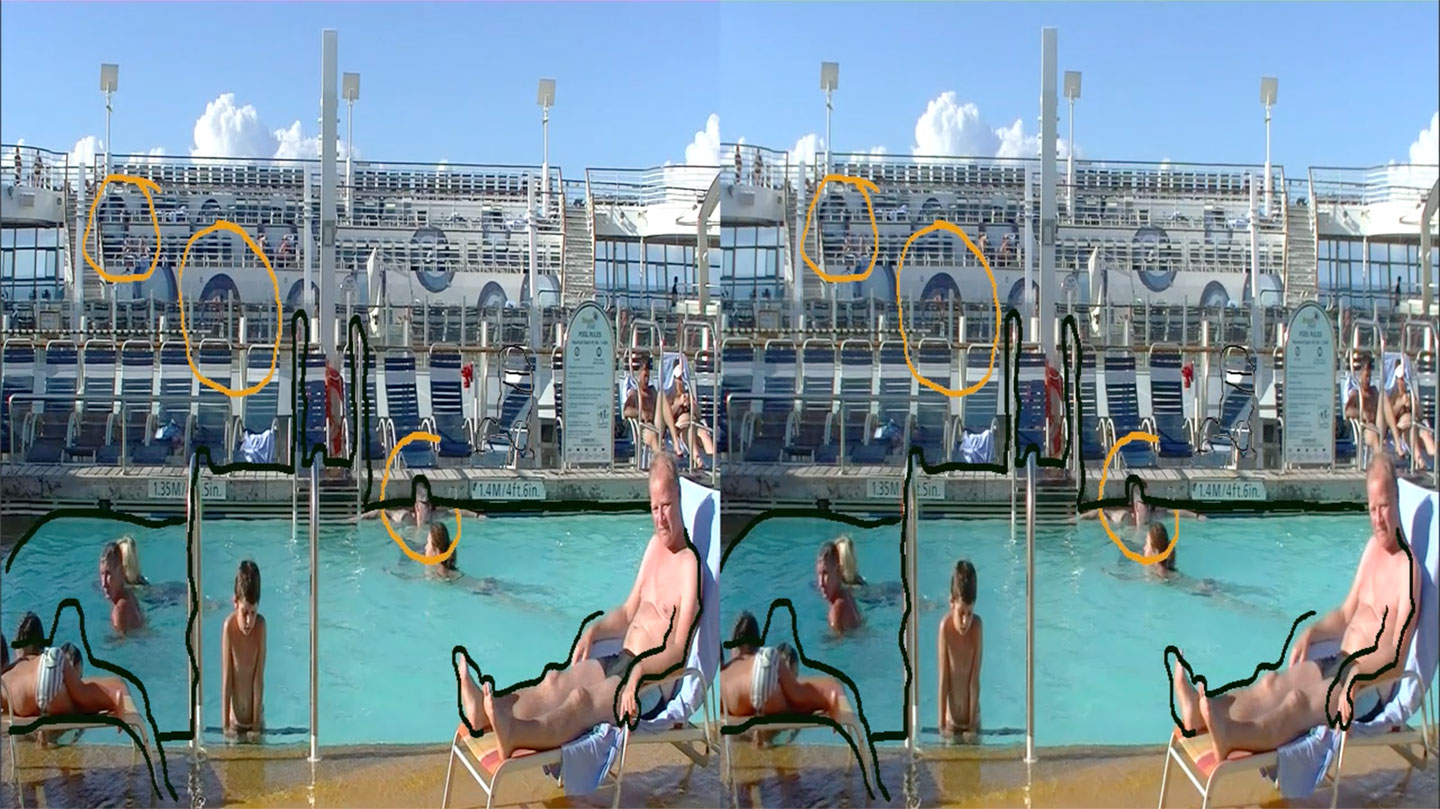Trisha, you are setting up an exhibition right now in Berlin, which will be the first in a series of three in which you are looking at the theme of translation. The second installment will be in Japan, and then you will present a third iteration at the Biennale de l’Image en Mouvement.
Yes, the plan is to make at least three chapters, or translations, of this work.
AL: In terms of the fiction, what is this series—that will go into different iterations, translations, and transformations—about?
TB: The fiction, which is more of an excuse for movement than the driving force, follows the form of a road movie. It is loosely based on the assumption of an invisible figure as a means to enable the deconstruction of the cinematic body and enable a mode of looking, on the viewer’s part, that is more closely related to phenomenological narrative perception than reading. The film is constructed of several layered and overlapping elements in stereoscopic 3D, each of which undergoes a process of personal transformation. Much of the movie occurs in a space where there is at least as much potential narrative as there is kinetic narrative.
AL: How will the continuous translating change the narrative?
TB: Maybe the translating is the narrative. But the thing that the narrative changes is the perceptual space. Would you call that character development? Okay, let’s say the perceptual space is the thing that goes through puberty. If so, then translation functions as the generative conflict. The plan is to guide the film further and further away from legibility, in a pretty methodical way, and I can’t really predict what that will do—that’s why I’m making it, to find out. But I do hope that by essentially blurring the edges between what’s what, I can enable a truly abstract narrative experience, and that sounds really fun. Maybe it is a process of un-naming. It begins as an untranslatable thing, and the failed attempts will serve as a means toward formal abstraction. I’m interested in what emerges to the foreground when the protagonists lose shape. And I think it’s different for everyone and depends on synchronicity.
AL: You have come from working mainly in performance and then film. Now your work is more and more installation based. How did this shift influence the kind of work you produce and the way you think about your artistic process?
TB: I started out with performance in a very organic way. I’ve always been in a constant state of “making a movie” that is way beyond my means, and it’s always been part of my life to videotape the things around me, and assemble those things in relationship to the fantasy of the current movie. I would show these clusters of edited material to my friends in my bedroom and fill in the gaps with storytelling. The logic of film editing, especially the structure of shot–reverse shot, is the perfect setup for what I call “noun comedy.” The inversion of the grammar of “reaction” as a means to transform the thing that’s reacted to.
I still think of my things as possessing a lot of comedic intent, but I would say that now they perform more like dramas—at least rhythmically. I stopped performing for a few reasons, but I’ll give you the most practical ones. I can afford a studio now! Which is great because I can touch and move and have things, which as an activity is so pleasurable and the opposite of editing video. If I don’t engage with objects, my internal metaphors start referring only to things in an image-based world, which I find much more boring and less funny than the physical one that is full of weighty, slipping, constantly vulnerable objects and bodies. Also, after doing a few performances of a body of work (like Madonna y El Niño, my first piece that gained attention outside of my bedroom), I wanted to move on and start new projects where showing it didn’t require the presence of my person. I could feel the threat of suddenly getting a lot of attention and getting stuck in a loop of doing the same thing. Now I let the objects perform for me. Maybe I’ll bring my body back into my work later, like when it’s older and grayer and hopefully fatter.
AL: You have said that your responsibility is to set the rhythm while opening up a psychological space that allows the viewer to connect unlike things. So a lot of your work is about connecting, but it is also about breaking apart—breaking language, for example, and also breaking sense in a way. Are you interested in the aspect of deconstructing?
TB: I wouldn’t say it’s about deconstruction. It’s the opposite of deconstruction: it’s chopping something into bits and then thinking of the bits as found objects. I think it’s because I can’t just start with a completely amorphous thing, I have to be somewhere and then walk in different directions at the same time.
AL: So in a way you are working against a single idea or proposition by producing fragments, layering them, and going into different directions at the same time. This is also a political notion, away from the norm.
TB: I feel like it is political because a lot of its intent is to create recognizable empathetic protagonists out of almost random combinations. For example if one sound happens with a movement, then it connects to the last time that there was a sound and a movement, and its repetition forms its character a little more and it’s more real, or substantial. It matters more. Is pattern a way of possessing more matter over time? But anyway, to create empathy for a thing without a body, or something with a really different body, I think, is political. And it is queer in the sense that it is about being abstract and not really having a defined shape that people can create expectations from. It asks for constant sensitivity and openness, because the thing can’t be defined, and so you can’t just put it places. So it’s about power and power structures, a refusal to participate in given power structures and hierarchies.
AL: Your work is political, but it also includes a lot of personal moments and images. For example in the new video we see your family at home or your Tito Pepe’s travel pictures. How does this work, taking footage and images of your family and friends, these very personal moments, and including them in the art-making process?
TB: Well, your politics always come from your experiences, and I work with materials that are available to me: in both thoughts and images, real things and also feelings. I don’t really know how not to have that as a place to start from. I think of my job as like inventing glue, because I have these different images, for example, a tourist site at a Filipino volcano, or a crystal-making kiosk at a mall in Florida. I realized the desire to preserve a memory was what connected them. And so that’s why I chose to add a slideshow of Facebook photos to that sequence, and the by-product of that decision was that I got to zoom into a Monet [reference to one of Tito Pepe’s Facebook pictures, showing him in front of a Monet painting] and open up that whole can of pleasurable worms—and that’s not really something that can be written. Every time I let my intent drive, the stew loses a lot of flavor, maybe from a lack of presence. That word again! And maybe it has something to do with a lack of boundaries. But art and life for me are very intertwined.
